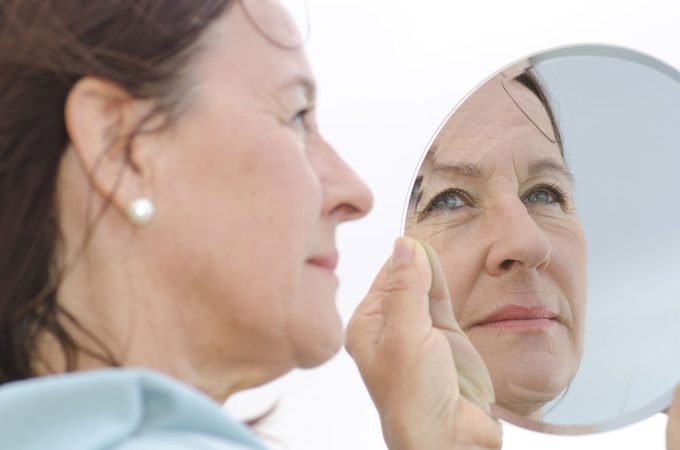Is Red Light Therapy Safe?
Some dermatologists and salons are now offering red light therapy, which is said to rejuvenate skin. Our beauty editor investigates

Many tanning salons offer red light therapy, in addition to tanning beds’which in some provinces are restricted for use by those under 18 due to the danger of developing skin cancer. The red light treatment, also done on a light-bed, is advertised on websites as UV-free. Apparently, red light produces a wavelength outside of the skin-damaging UV range and is thought to have multiple healing benefits. At some tanning salons, it is promoted as a ‘full-body skin rejuvenation treatment’ that increases collagen in the skin, which in turn can make it look firmer. Red light is also said to decrease adult acne.
A local tanning salon staffer told me red light therapy is also for treating scars and stretch marks. ‘It’s done on a full-body tanning bed that has different bulbs than a tanning bed.’ I asked what kind of light bulbs their red light treatments use, and she wasn’t sure. Then I contacted the headquarters of a tanning salon company to ask the same question, and their answer was fluorescent lights. Guess what? Fluorescent lights do emit UV rays (how strong they are is unclear).
An example of the cost of red light therapy at a tanning salon: The first treatment is free, then it’s $35 a month. Treatments are 20 minutes, and I was told you need to go several times a week to get results.
Some dermatologists offer the treatment, though the Canadian Dermatology Association does not have a position on red light anti-aging therapy. (As for Health Canada, it would not endorse any therapeutic claims for the devices used.)
So I spoke with a Toronto-based dermatologist about what she offers, and found it seems safe. Dr. Martie Gidon uses a floor-stand device (rather than a ‘bed’). Dermatologists’ general term for red light therapy is LED (light-emitting diode) photomodulation. ‘Red LED light does not contain any type of UV light,’ says Gidon. It is safe as long as it is used properly and there isn’t over-exposure. If you went to a tanning salon for the treatment, you couldn’t be sure what kind of light you’re getting.
According to Gidon, LED red light rejuvenates skin by stimulating fibroblasts to produce a little collagen and decrease the enzymes that break down collagen.
‘It’s a mild treatment that can help fine lines over many sessions but it does not take the place of lasers, which are more aggressive and will give a better result,’ says Gidon. ‘I use LED light as an adjunct to other treatments – for example, with a facial or microdermabrasion for some added benefit for face, chest and back. It’s used to address fine lines, texture and acne, and to hasten healing from other procedures.’ When done in tandem with other treatments, it costs about $40.
For a more advanced treatment for acne or rejuvenation, Gidon uses it with a gel that enhances light penetration. This costs $100 per session, and typically you’d go once a week for four weeks.
Bottom line: It could work for you, but talk to your dermatologist first.
This article originally appeared in the October 2014 issue of Best Health. Subscribe today to get the full Best Health experience’and never miss an issue!




